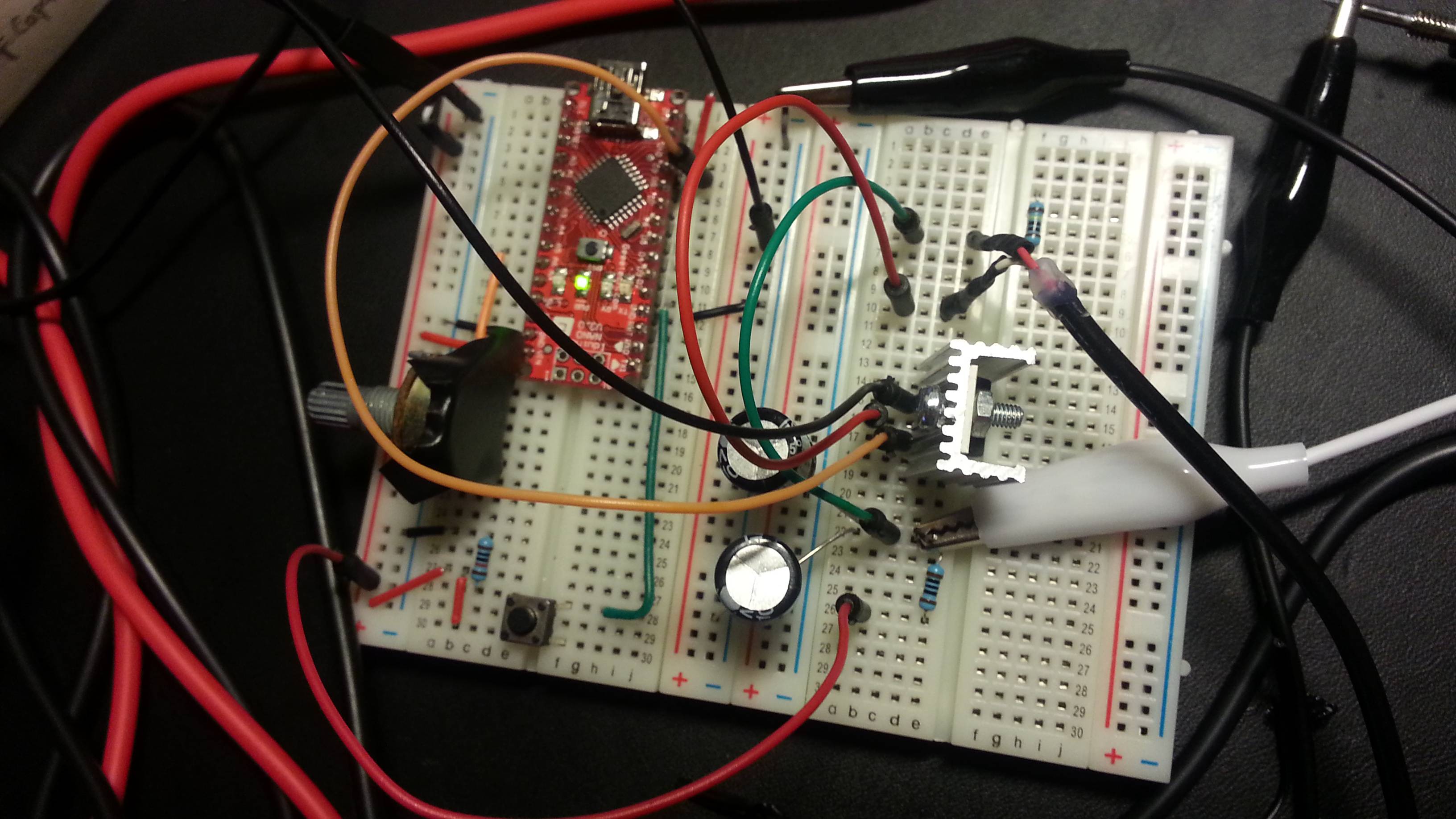Introduction
Okay so this is yet an "electronic newbie Arduino fan" project, but I don't just want to turn my fan ON and OFF but adjust the speed so it's not that noisy and give a more relaxing breeze.
The question is an extension of my previous question but so much have changed since then.
What have changed:
- I burned my fan det because I tried connecting it directly to a 12 V DC (just to see if it would run faster) - Mmm.. the smell of magic purple smoke
- I bought a new USB fan (8 $)
- I bought a multimeter that has oscilloscope - giving me eyes to see what's happening
- I got hold of a MOSFET: RFP50N06 - Used a NPN Bipolar junction transistor before (it got hot and sometimes it don't work)
The question
Usefull specs:
- The USB fan uses 5V and draws 330 mA according to my measurement.
- I plan to use a 5V 0.7-1.0A adapter - don't want to risk frying my computer.
This is my RC filter circuit

An I know that people are gonna ask me for the schematics:

And a more clear schematic:

As you can see I'm able to adjust the potential from the source (5V 700mA power adapter), but when I connect it to the fan

I get no breeze out of it... No matter how I turn the potentiometer.
(Turning down the volts gives some summing sounds from the fan..)
Looking at the oscilloscope gives me this


Please help me solve:
- how I can make this work?
- Understand why it's not working as it is now?
Thank you
BONUS info
I took the broken one apart an found

(BTW: What is the name of such motor _?)


(My screwdriver broke some of the lines)
This is my new fan

UPDATE
I heard you loud and clear :-)
Here is the schematics:

simulate this circuit – Schematic created using CircuitLab
I have now removed the resistor and it started the fan, but it makes an annoying noise. This was not the case with a NPN transistor where I had the RC filter BEFORE at the Base - the transistor got hot so I wanted to apply the filter AFTER the transistor (or you could call it on the "big" current flow)
(I can't access the fan's internal component without breaking it.)
